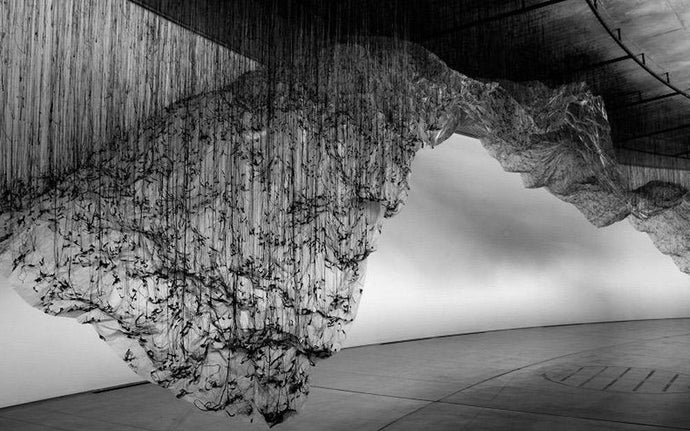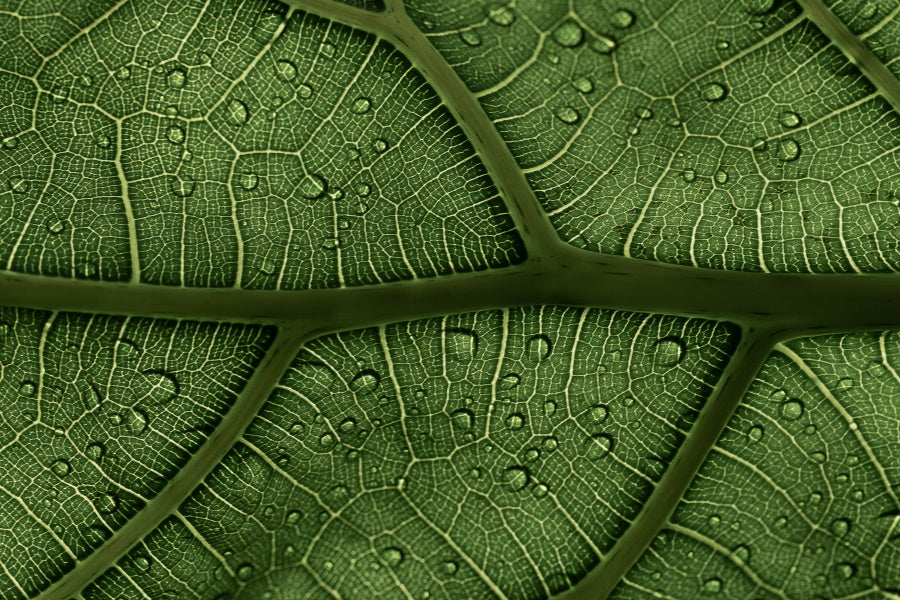Reverse of Volume RG | Yasuaki Onishi

Onishi Yasuaki | reverse of volume RG
The artwork reverse of volume RG brought Yasuaki Onishi international approval. Created in 2012, Yasuaki used only plastic sheeting and black hot glue to create his artwork. By varying the length of the glue between the sheet and ceiling Yasuaki is able to create a plastic terrain. A whirling landscape. A combination of elements. The man-made and the natural. The work is the result of Yasuaki Onishi's meditation on casting the invisible.Onishi Yasuaki, The Man-Made and The Natural
Onishi Yasuaki integrates the Japanese philosophy into his work. His work tends towards the wabi-sabi aesthetic - imperfect, humble and unconventional beauty. The artwork has an inherent variance by its design. Exact recreation is impossible due to the fundamental uncontrollability of nature. The wild aspects of nature add a random element to the work. How the plastic sheeting bends. How the glue dries. These aspects are unique. The result of minute elements effecting the work. The materials contradict the effect. A deliberate choice by Yasuaki. The plastic and glue are products of utility. They are not considered to have beauty. By using them in his work Yasuaki questions our perception of beauty. He asks why can these not be beautiful. He demonstrates nature through the man-made. That the man-made has aspects of nature. That nature has aspects of the man-made. These terms define the way we see. Yasuaki believes these terms to not be opposites but a spectrum. The observer must live in the moment. Only by doing so are they to understand the piece. To connect to Yasuaki's mind. Yasuaki utilises lighting to soften the artificial forms of the plastic and glue. By doing so, the work takes on an organic structure. It is soft, its shape and edges are vague. Yasuaki's choice of materials eschews all that is extraneous. He uses only the necessary. This removal is not done with a scalpel but the hands. It is rough and coarse like the plastic. It is random like drying glue. Yasuaki uses the free shape of his work to romanticise nature. Throughout its creation he must adapt as one adapts in the wild. It is wabi-sabi.Casting the Invisible
Onishi Yasuaki laid plastic sheeting over cardboard boxes to create the his work. This landscape of shapes created from the volume is the origin of the work's title. We consider volume to be a definite aspect. Yasuaki reveals that the reverse of volume must be indefinite. We are unable to know it exactly. To appreciate wholly. Observers are able to walk around and underneath to meditate. To consider the work from all views. From all aspects. Yasuaki's work is a representation of the universe. In a constant state of construction. A constant state of deconstruction. Traces of these events remain. The installation calls us to study these effects on the plastic sheeting. These effects on ourselves. To respect the traces of events. The remains, the memories of an event. To live in the event. The work emits its open aspect. It is a call to introspection. To consider the mundane. The discovering of the beauty of flaws. Yasuaki toys with the general wabi-sabi aesthetic. From the darkness of volume emerges light. From the functional box emerges the non-functional work. Soul from the soulless. Obscure from precise. Man from nature. Nature from man. This is what Onishi Yasuaki considers. It is as the work reveals. It is the reverse of volume.




Words | Rob Woodgate





